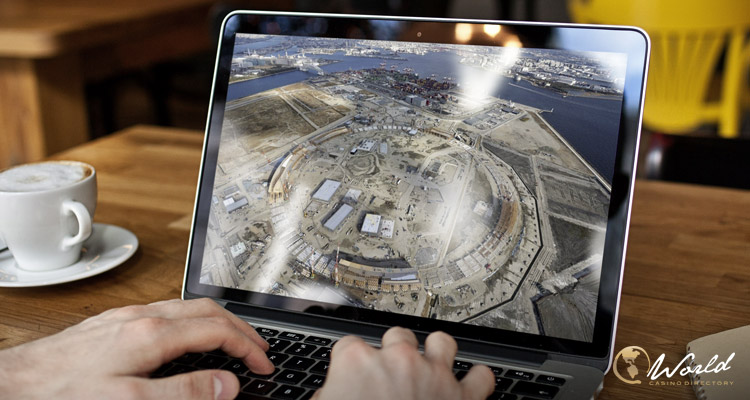Work on ground preparation has now officially started for the planned Osaka’s integrated resort (IR) which is slated to be cited right beside the Osaka’s expo site. However, this step forward is masked by issues that were already the cause of delaying the construction of foreign pavilion for the 2025 expo.
New problems:
The aforementioned work on the man-made island located in Osaka Bay, Yumeshima, started approximately less than 500 days prior to the scheduled opening of the 2025 expo on April 13, 2025. Additionally, it is happening right at a time when the “troubled event” is burdened by labor shortages and rising costs. When considering the logistical issues facing the expo, in addition to the original plan to finish construction in a less than 1½ years, concerns arose as to whether the IR could be built on time.
In this regard, during December 4, the municipal and prefectural governments revealed that “the first cement was being poured into the ground at a 21-hectare area on Yumeshima in order to prevent liquefaction and firm up the base on the part of the island where the casino facilities will be built.”
As for the land liquefaction countermeasures, they are projected to be finished by the end of the FY starting in April 2027 at a cost of $173.4 million, which is approximately ¥25.5 billion. On a related note, Hirofumi Yoshimura, the governor of Osaka, commented on December 4: “Full-scale construction of the resort is scheduled for the spring of next year.”
Regarding the background of the IR, it represents a joint project between MGM Resorts Int. and ORIX. Additionally, it will involve shopping areas, hotels, congress facilities and of course a casino.
Construction will continue concurrently with liquefaction countermeasures:
As reported by the Japan Times, according to the current plans, it is predicted that construction will continue simultaneously with liquefaction countermeasures and that everything will be finished by the beginning of the summer season in 2030, with IR slated to formally open its doors to the public that fall. In this regard, Yoshimura commented: “We’ve already factored in the fact that the preparatory work and liquefaction countermeasure construction work will start at the same time as the major expo construction work, so we can handle the construction work as currently planned.”
However, the aforementioned IR project’s setback has already occurred, meaning that it was initially planned to open in 2029, but postponements in obtaining central government validation required the original plans to be altered.
Cost concerns:
Nevertheless, the concern about expenses for both projects doesn’t waver in its intensity. An increase in the cost of transporting construction materials was cited as the cause of the rise in the overall expenses of construction of the expo, which rose from the original calculation of of ¥125bln to ¥235bln.
Furthermore, because of this reason, the overall expenses of IR, which were formerly calculated at nearly ¥1.08 trillion, have increased to ¥1.27 trillion, which is taken care of by the joint project of ORIX and MGM. Meanwhile, Osaka is taking on ¥25.5bln in land development costs.
But during September, when Osaka officially entered into an agreement with ORIX and MGM, it involved a clause that permitted them to halt the project if expenses continue to rise. According to the contract, the possibility of demand oscillation is carried by the operator of the IR. Additionally, in case the operator voluntarily removes itself from the project, he will have to pay a withdrawal fine.
As soon as it gets finished, the IR is projected to accumulate ¥520 billion in income per year, with nearly 80% projected to be collected from the casino within the IR.
A large part of the IR construction, involving the liquefaction countermeasures, will occur throughout the 6-month expo, which will occur from April 13 to October 13, 2025. Slightly more than 28.2m visitors are predicted to attend, involving 3.5m foreigners.



